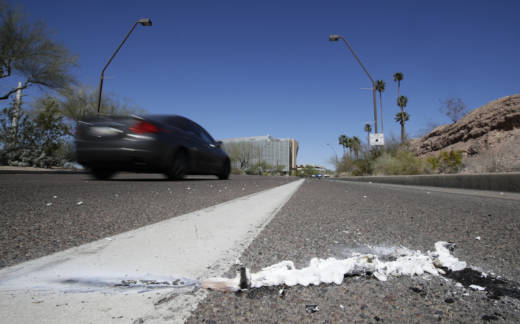The Uber self-driving vehicle that struck and killed a pedestrian two months ago in Tempe, Ariz., took note of the victim with its sensors, but its software did not engage the car’s brakes to prevent the collision, according to a preliminary report released Thursday by the National Transportation Safety Board.
Investigators with the federal agency determined that the car’s detection systems, including radar and laser instruments, observed a woman walking her bicycle across the road roughly six seconds before impact — likely enough time, in other words, for a vehicle driving 43 mph to brake and avoid fatally injuring the woman.
But it did not immediately identify the woman as a human pedestrian. Instead, the agency said, “as the vehicle and pedestrian paths converged, the self-driving system software classified the pedestrian as an unknown object, as a vehicle, and then as a bicycle with varying expectations of future travel path.”
It was not until 1.3 seconds before impact that the car’s self-driving system “determined that an emergency braking maneuver was needed to mitigate a collision,” NTSB explained. Investigators added that the driver, who was alone in the car and survived without injuries, intervened less than a second before the crash and only began to brake after the impact.
As to why the software did not engage the brakes on its own, NTSB noted that this passive approach is actually an intentional part of the design. The agency explained that the vehicle, a modified 2017 Volvo XC90, comes “factory equipped” with automatic emergency braking — but that Uber’s system disables this function and others when it’s in use.

9(MDAxOTAwOTE4MDEyMTkxMDAzNjczZDljZA004))